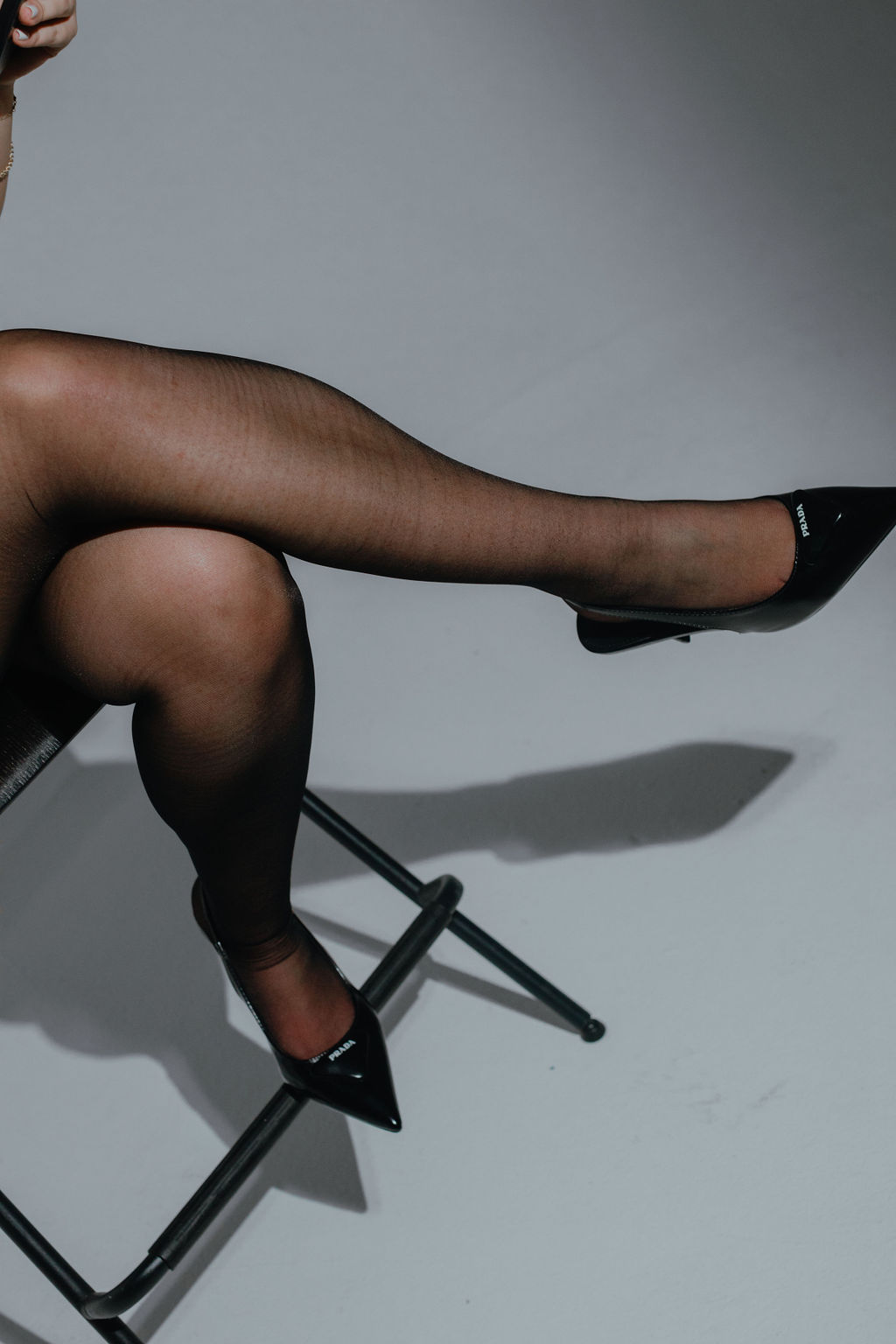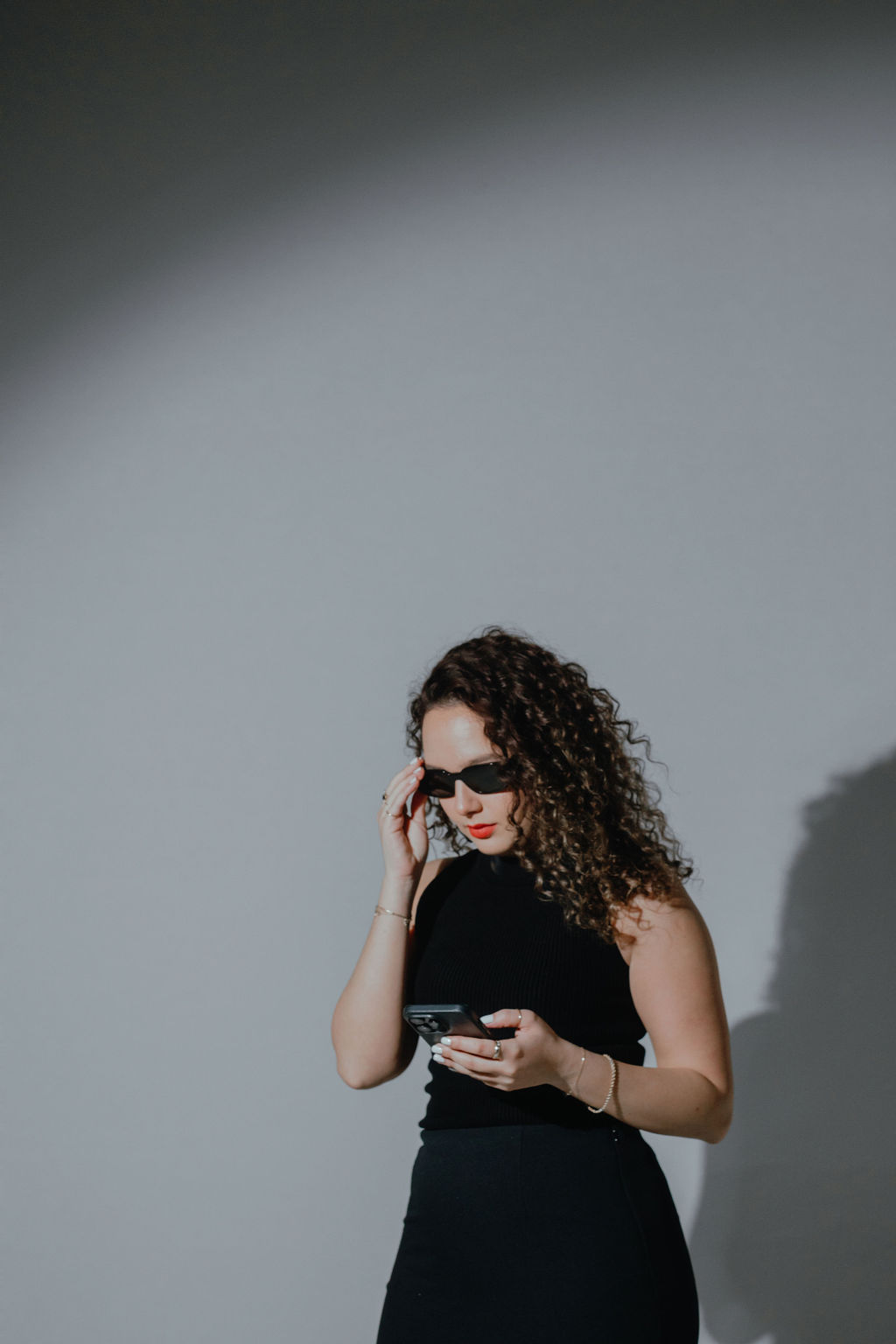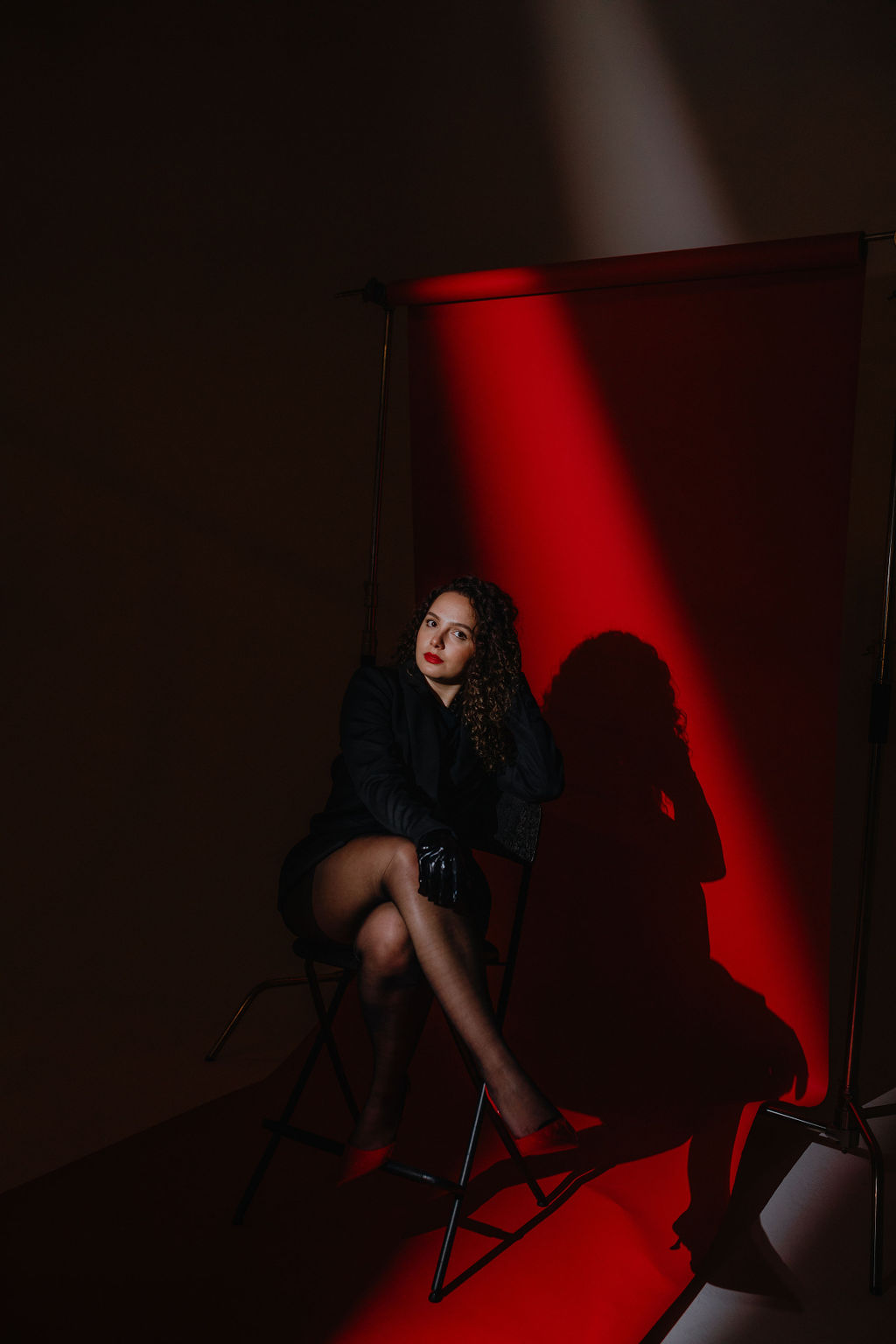
What does it actually mean to be creative with your branding? And is it possible to be too creative? In our opinion, absolutely.
So let’s dig into our tried and true method that you can use to make sure your branding is differentiated in a way that feels true to you and actually provides sustainable content. With the creativity scale, you can take out all of the guess work!
A Creative's Guide
A blog written by creative director Jasmine Haitalani where she shares how she approaches each part of brand building in her business and for industry leading clients. Indulge in each post and get inspired to take action that allow you to set the standard, improve your brand and make revenue.
TRENDING TRENDING TRENDING
featured
The Creativity Scale: Here’s Our Method to Create a Perfectly Balanced Rebrand
August 22, 2024
I’ve been thinking a lot about creativity lately. It’s everywhere now, more accessible than ever, and people are really pushing the boundaries, trying new things, and exploring uncharted territories in their niches. It’s exciting to see this surge of creativity, but sometimes it feels like we’re taking it a bit too far. There’s a fine line between being creative and being a little too literal or predictable.
I want to dive into how we can strike that balance. Whether you naturally struggle with creativity or find yourself coming up with ideas that are perhaps a bit too out there, I’m here to help you ground those ideas and ensure they not only stand out but also contribute to your success. After all, creativity should lead to results—whether that’s more revenue, attracting new leads, or simply making sure your brand looks top-notch and high-quality.
A few years ago, there wasn’t such a big push to be creative. Back then, just having a website or some kind of branding was often enough. It was all about making do with what you had. But times have changed. Our marketing and social media habits have evolved, and with that, so has the expectation for creativity.
How the Branding Landscape has Changed in the Past Few Years
It’s like when Instagram rolls out a new feature—those who jump on it first tend to have the most success. But as more people catch on, it becomes more competitive. The same thing is happening with creative assets like brand photoshoots, websites, and overall branding. A few years back, just having professional photography was a huge differentiator. It made you look ahead of the curve.
Now, thanks to platforms like Pinterest and the increasing affordability of professional photography and video production, those same elements are accessible to nearly everyone. It’s no longer enough to simply have a brand photoshoot. Now, we have to strike a fine balance between creativity and cautiousness. So first, let’s dive into what it means to be creative and answer the question: are you being too literal?
If you’re a money coach, for example, you might think it’s creative to use a money gun in your shoot. Or if you’re a health coach, you might opt for a green juice. But here’s the thing—being too literal isn’t really creative anymore. It’s expected.
The problem with literal creativity is that it’s predictable. If you want to convey happiness, you might immediately think of using the color yellow, or balloons, or smiley faces. But if that’s your first thought, it’s probably everyone else’s first thought too. True creativity goes beyond the obvious. It’s about creating something unexpected, something that stops people in their tracks and makes them curious about who you are and what you do.
The Challenges of Cautious Creativity
On the other end of the spectrum, I have clients who struggle to think outside the box. It’s not that they’re deliberately playing it safe; they just don’t see themselves as naturally creative or visionary. They often get stuck at the predictable or literal levels of creativity, unable to push themselves into truly innovative territory.
With these clients, we start by examining their current ideas. We dig into why they like certain concepts and what vibe or feeling they’re trying to convey. From there, we work to elevate those ideas, moving them from the predictable into something more creative and unique.
The Challenges of Over-Creativity
For my more creative clients, having lots of ideas can sometimes be overwhelming. It’s great to have a bunch of concepts, but if you try to implement them all at once without a clear direction, you might find that not all of them align with your brand or marketing goals. Some ideas might be too short-lived, and that’s where things get tricky.
For example, I once did a photoshoot with Dalmatians—a concept I thought was super creative at the time. But after using those images once or twice on social media, I realized they were too specific. Even though I had a variety of images, they all stemmed from the same creative concept. After using them a couple of times, it felt like I’d run out of new content, even though I had more photos left. This is the risk of being too creative—you can end up exhausting your creative ammo without fully leveraging your resources.
If you’ve ever done a big photoshoot and felt like the images didn’t quite fit with your content or brand, it might be because you were being too creative. When your ideas are too out there, they can become less versatile, making it hard to reuse them effectively.
What is the Creativity Scale?
When it comes to creativity, I often work with two types of clients: the big dreamers and the cautious planners. The big dreamers have a million ideas and want to pursue every crazy, innovative concept they can think of. Then there are those who want to try new things but tend to play it safe. My job is to help both types find that sweet spot through this process, so let’s dig in.
So, what is the creativity scale? It’s a spectrum we use to ensure our clients are being creative in the right way. Some clients naturally gravitate towards the safer side of the scale, while others are all about taking risks. The scale helps us find a balance that suits the brand’s personality and goals.
For instance, a brand might want to explore creativity in its photoshoots but keep things more traditional in its logo or website design. Alternatively, they might go all out with creative elements in one area but play it safer in another. The creativity scale helps us ensure that all these elements come together in a balanced, cohesive way.
The Photography Example: Applying the Creativity Scale
Let’s take photoshoots as an example. How do we ensure that a photoshoot is balanced—not too safe, not too creative, but just right? We break it down into four categories: outfits, location, poses, and photography style (which includes editing and angles).
Each category is rated on a scale of 1 to 3:
- 1 being very expected and literal,
- 2 being neutral,
- 3 being creative.
Our goal is to achieve a total score between 4 and 12 points across these categories. If your score is below 4, you’re playing it too safe; if it’s above 12, you might be overdoing it with creativity. Staying within that 4 to 12 range ensures that your photoshoot is creative enough to stand out but still aligned with your brand and usable over the long term.
Breaking Down the Categories
Here’s how you might apply the creativity scale to a photoshoot:
- Location: A 1 might be a plain, all-white studio. A 2 could be a more interesting but not overly creative location, like a hotel or an outdoor area. A 3 might be a studio with a unique setup, cool props, or a distinct theme that you can’t find just anywhere.
- Outfits: A 1 might be your everyday clothing. If you’re wearing something you would only wear for a photoshoot or super special occasion, that’s probably a 3.
- Poses: A 1 would be expected, cookie cutter poses. Think of the woman sitting in front of her laptop “typing.” A 3 would be closer to the poses you see on Zara’s website.
- Photography style: A 1 would be pretty straight on angles, standard editing style and a 3 might mean using something like a fish eye lens and editing all of your photos in Sepia tone.
By evaluating each category this way, you can make informed decisions about how creative to be in each aspect of your photoshoot. This method helps ensure that your final images are not only visually appealing but also versatile enough to be used repeatedly without losing their impact.
Recently, we did a photoshoot where we used flash photography and some unique post-production editing techniques. Because we took creative risks in those areas, we decided to keep the location simple but played with more creative outfits. This way, we balanced the creative elements to produce a result that was aligned with the brand and looked high-quality—without being too predictable or too out there.
Beyond Photoshoots: Applying the Creativity Scale to Branding
The creativity scale isn’t just for photoshoots; it’s something we use across all aspects of branding. Whether it’s your color palette, font choices, text, or overall photography style, each decision should be weighed on the creativity scale. This allows us to create a custom strategy for each client, ensuring that every element of their brand reflects the right amount of creative risk.
What sets our creative style apart is our ability to customize our work for each individual. Many creatives have a signature style they apply to all their projects, but we focus on highlighting the unique personality of each brand. By using the creativity scale in every part of the process, we can determine where a brand falls on the creative risk spectrum.
Take our brand, for example. We love to take creative risks with photoshoots and marketing, but we keep our branding sleek and minimal. By knowing how to combine all these elements—website, marketing, content, branding, and photoshoots—we create a brand that feels holistic and well-rounded. Each individual element, whether it’s a photo, a webpage, or an Instagram post, looks high-quality and unique on its own because we’ve found that perfect balance on the creativity scale.
If you’re reading this and wondering whether you’re taking enough creative risks, give yourself a brand audit. Ask yourself: am I being too literal or predictable? Am I exploring enough creativity in my brand? If your audience seems disengaged, your content isn’t converting, or your brand feels flat, it might not be a platform or timing issue. Instead, you might need to inject more creativity into your strategy.
THE LATEST
THE
MARKETING EDIT
Get edits you can make to your brand marketing to increase your revenue delivered straight to your inbox.
JOIN OUR EMAIL SERIES
Learn how to create an extra $100k with your Rebrand by becoming the only option, just like our clients.
Get access to our free training where you'll learn how to make an extra $100,000 in revenue after you rebrand your business as a coach or service provider.
GET THE TRAINING
COPYRIGHT HIGHFLIER POWERHOUSE 2026 | TERMS AND CONDITIONS | PRIVACY POLICY
COPYRIGHT HIGHFLIER POWERHOUSE 2024 TERMS AND CONDITIONS | PRIVACY POLICY
Navigation
Learn
Connect
Highflier Powerhouse is an immigrant-founded agency based in the United States that offers marketing and creative services to service-based entrepreneurs across the globe.
a creative's guide
BRAND YOUR WAY TO A MILLION
THE SALES STUDIO
THE INDUSTRY'S CHOICE
THE MARKETING EDIT
[THE PODCAST]
[THE blog]
[THE email list]
[DFY RETAINER]
[DFY PROJECT]
HOME
CLIENT CATALOG
ABOUT US
BROWSE //
WORK WITH US //
AND MORE //
HOME
CLIENT CATALOG
ABOUT US
BROWSE //
WORK WITH US //
AND MORE //
RESOURCES
OUR OFFERS
BECOME THE CELEBRITY OF YOUR NICHE
[PRIVATE PODCAST]
a creative's guide
BRAND YOUR WAY TO A MILLION
THE MARKETING EDIT
[THE PODCAST]
[THE blog]
[THE email list]
GO BACK
BECOME THE #1 BRAND IN YOUR NICHE
[the PRIVATE PODCAST]
Paragraph
Paragraph


